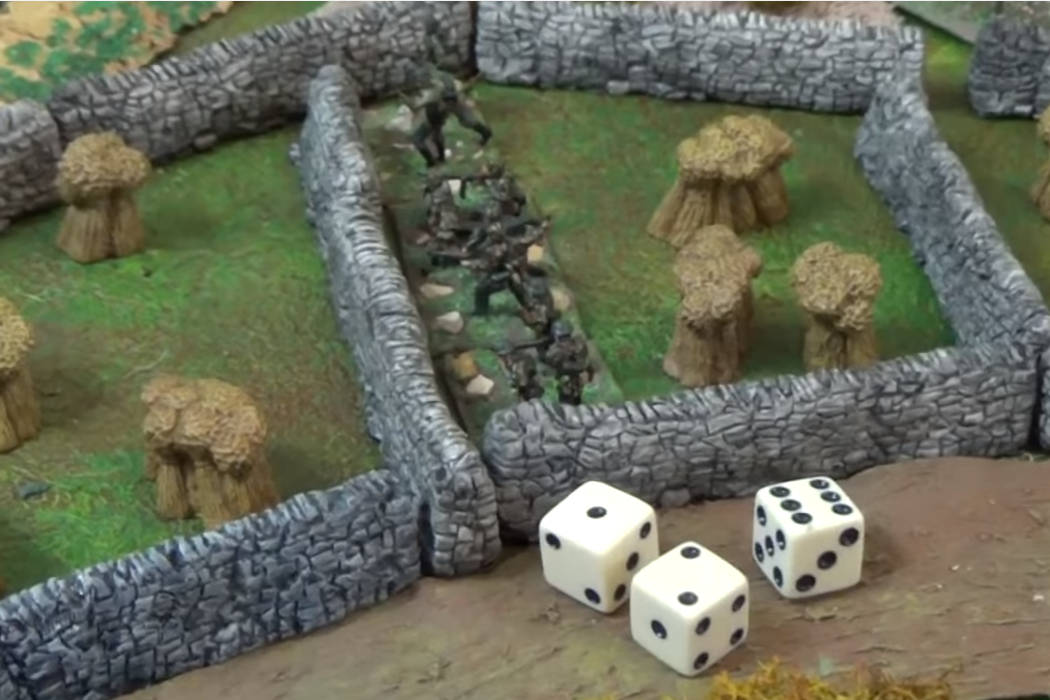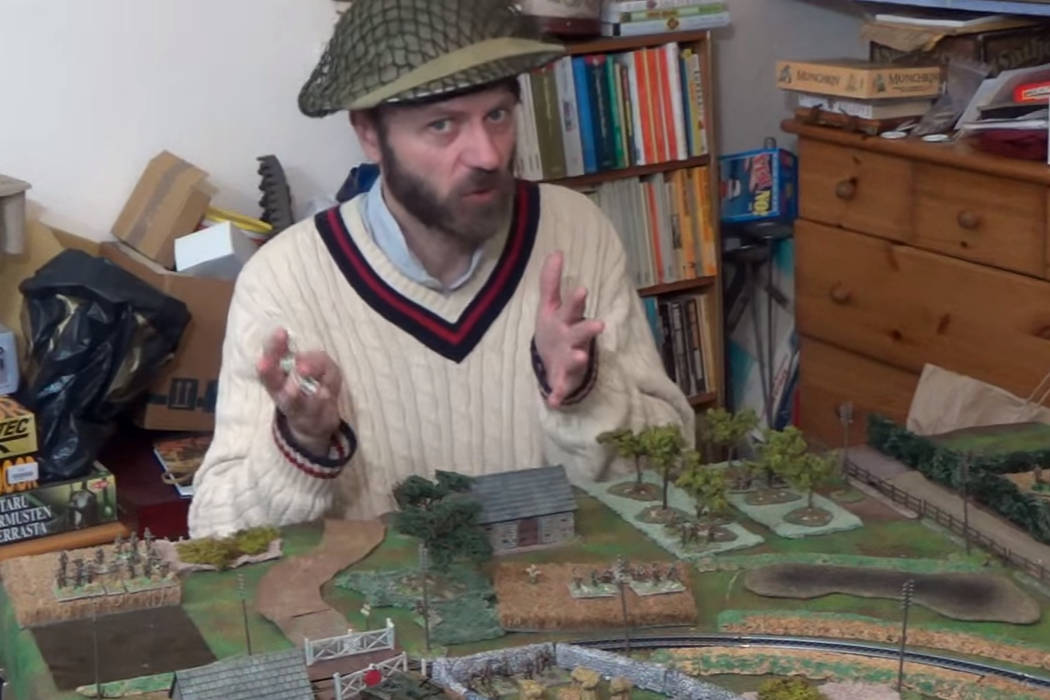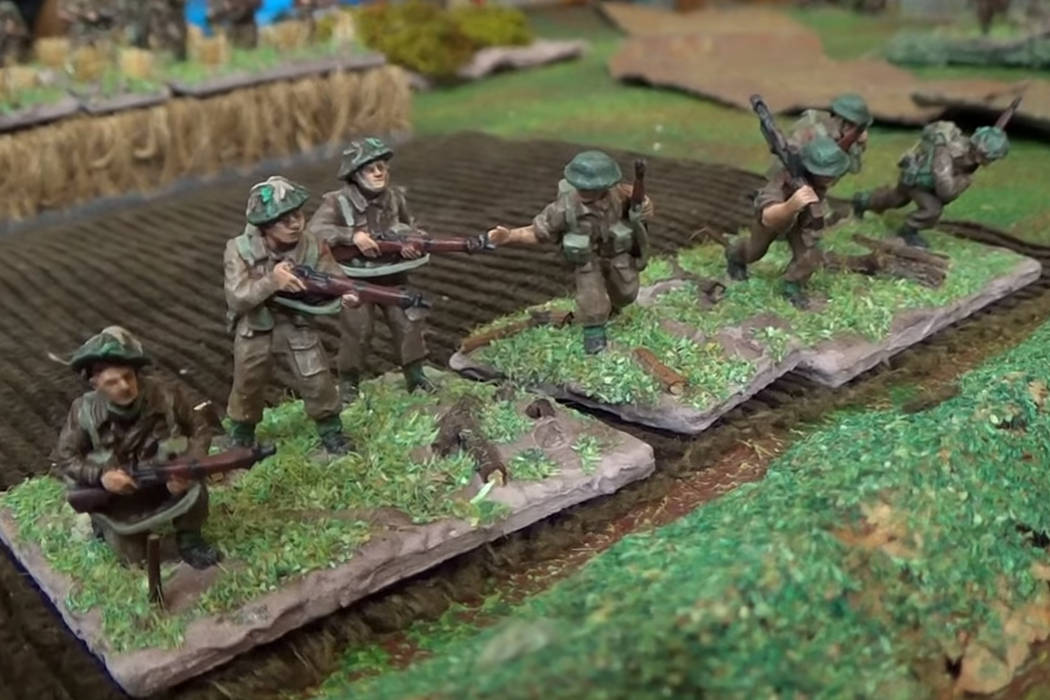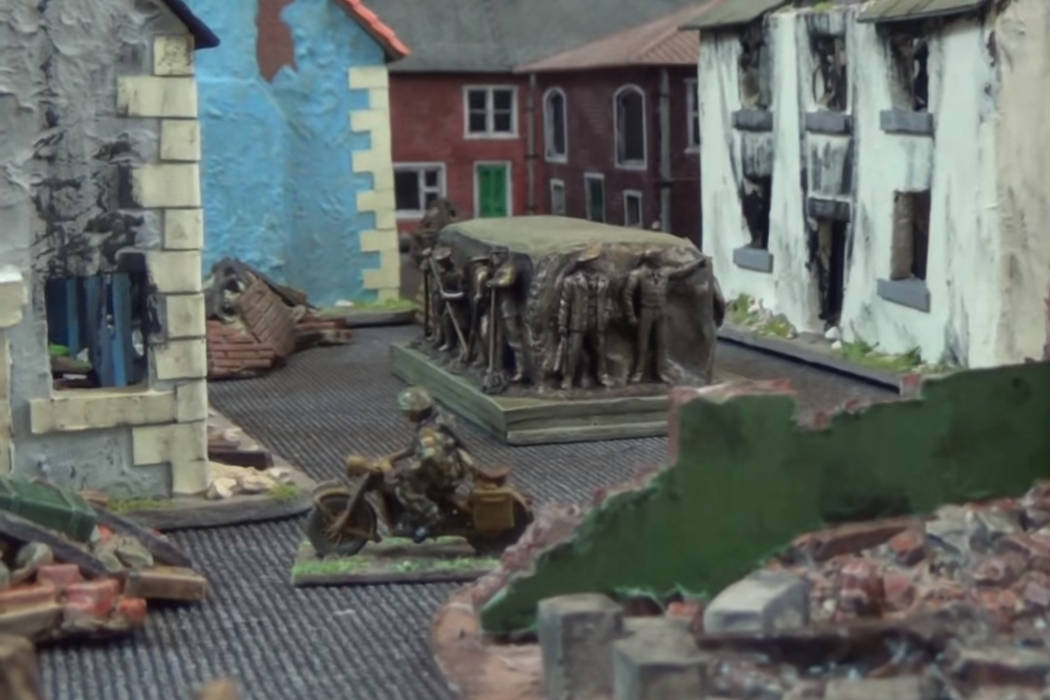Following on from the “Operation Crossfire: Smoke & Close Combat” video is yet another useful introductory video by Nikolas Lloyd, covering How Not To Play Crossfire! This gives a quick introduction to what not to do tactically when playing Crossfire – the rules do not introduce artificial constraints such as arbitrary ranges, so you have to use real-life tactics to be successful… Continue reading “How Not To Play Crossfire Video”
Category: Crossfire FAQ
Crossfire Smoke & Close Combat Video
Following on from the “Crossfire: Movement & Reaction” video is another good introductory video by Nikolas Lloyd, covering Smoke and Close Combat in Crossfire. This gives a great quick introduction to basic infantry movement and reactive fire in Crossfire. Continue reading “Crossfire Smoke & Close Combat Video”
Crossfire Movement & Reaction Video
Following on from the “Operation Crossfire: Introducing Crossfire – World War Two Wargaming” video is another good introductory video by Nikolas Lloyd, covering Movement and Reaction in Crossfire. This gives a great quick introduction to basic infantry movement and reactive fire in Crossfire. Continue reading “Crossfire Movement & Reaction Video”
Crossfire Introduction Video
Operation Crossfire is a fantastic set of introductory and training videos for Crossfire – put together by long-time Crossfire gamer and aficionado Nikolas Lloyd. They are highly recommended to all, even experienced Crossfire gamers (as a nice to watch) – and if you have not seen them previously then be sure to take the time to watch them, especially if you have heard about Crossfire but not seen the game in action. Continue reading “Crossfire Introduction Video”
Ryan’s Basing & Painting Techniques
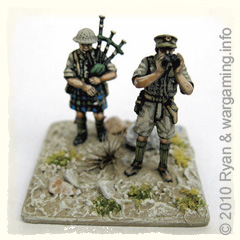
Ryan Davies is a member of the Crossfire Yahoo Group, and he recently put together a document detailing his techniques for painting and basing his 1/72nd scale figures – as a way to give something back to the wargaming internet community which he believes has helped him a lot over the years with his wargaming efforts. Ryan details how to cut bases from brass with a jewellers saw, his technique for labelling & indentifying his bases, and storing them.
Ryan then moves onto painting, especially soft plastic figures, covering how to paint, shade and seal them. He covers the merits of just brands of commonly available model paint, and the moves on to the actual techniques for basing the figures.
Banzai – The Japanese are Coming!
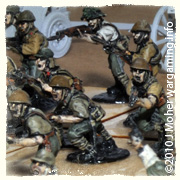
I thought I’d throw up some preliminary photos of my 20mm Japanese troops – these are the bulk of a Battalion for Crossfire, along with some extra supports and an assortment of guns and tanks to represent most typical Japanese forces throughout the Pacific and Burma campaigns. The figures are mostly Eureka & Warmodelling (Fantassin), with a handful of Sgt. Major’s Miniatures chaps, a few SHQ Officers & NCOs (and a pair of 8cm Mortar Teams), and a couple of Combat Miniatures Officers and a few Scouts/Snipers (plus the Mounted Command Group).
The force represents a Japanese Battalion of 3 Rifle & 1 MG Company, with Regimental Support coming from a pair of 7cm Infantry Guns, and a single 7.5cm Mountain Gun, from the Regimental Gun Companies (visible in the background spray painted in grey primer).
Group Fire and Crossfire – How To?
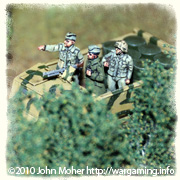
Conducting Group and Cross-Fires in Crossfire can sometimes be a bit of a ‘trap for young players’ for the beginner. As a result I’ve endeavoured to provide a simple little graphic tutorial that hopefully will illustrate the process fairly clearly and help explain some of the benefits…
There are several common mistakes (or perhaps misreading of the rule’s text is a better term) so this basic example will attempt to step through the main points. In our example a German Platoon has somehow managed to enter a small orchard (or olive grove) encountering a single British Squad within. Both the British Squad and the entire German Platoon are fully within the terrain feature – this means they both gain the advantage of Light Cover, and both sides have clear line of sight to each other despite the trees (as there is no intervening terrain feature or obstacle). A German Squad was previously PINNED and the British Squad has just finished phasing fire at the Germans, managing to PIN a second Squad before losing the initiative to the Germans; as Pins are not sufficient to retain the initiative (a Suppression or better being required). We take things up in our example as initiative has just passed to the German Player…
Troop Scale in Crossfire
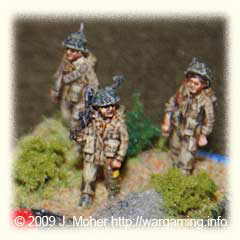
Something that Is not always generally recognised is that it is intended in CF that all (on table) vehicles and heavy weapons are modelled at a scale of 1:1 – i.e. 1 model of a tank, half-track, or gun is one real tank, half-track, or gun. While this seems logical to some, based on extrapolating the scale of Rifle Squads, HMGs, and Mortars to these, it is not always so to all players, however Arty has also stated this on a couple of occasions when asked… So in the interests of providing a clear guide from the author himself I have asked Arty again to reconfirm that this is what his original intent was, and we have had an ongoing discussion confirm & clarify this. As such the following is the key parts of a post and subsequent discussion on the Crossfire Yahoo Group, and Arty has also read and approved the main content prior to public posting so it can be considered as the closest to an official clarification there is likely to be on the subject.
Close Combat in Buildings & Hard Points
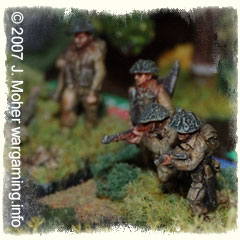
Close Combat in Buildings and Building Structures can sometimes be a little perplexing for players new to Crossfire. This page attempts to outline the process in clear logical steps to help walk the new player though the mechanics. While it may appear complex at first it is in fact relatively simple and will become second nature after a few combats.
General Concepts
In Crossfire, an individual building is generally intended to represent a single small to medium size dwelling or similar. It might also occasionally represent a small complex of 2-3 small buildings (like a small Eastern-European farmhouse with attached barn). As a rough guide, the playing area occupied is roughly about the same as what 4-6 squads would occupy.
Occasionally there will be exceptionally large buildings (such as the tractor factory in Stalingrad, or a row of adjoining terraced houses) – these are known as building complexes, and are treated as multiple ‘buildings’ with some special considerations (see page 6, Section 4.4.1a of the rulebook).
Modelling Japanese in Crossfire
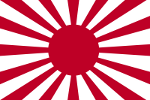 As mentioned in by blog entry Time To Do ‘The Pacific’ with Crossfire I have been inspired by the release of “The Pacific” by HBO to finally build a Japanese force for Crossfire, to game the early Pacific Campaigns of 1942-44 and the Burma/Malaya Campaigns. As I have a sizeable force of 1/72nd scale Japanese coming, I thought I would give some thoughts to how Japanese Battalions & Regiments were organised historically, what peculiarities and special weapons they had, and how these are best represented in Crossfire (i.e. as defined by the rules or by an alternate method). As a result these are my current thoughts on representing Japanese forces and most especially the presence of their main support weapons at Battalion level, over and above HMGs…
As mentioned in by blog entry Time To Do ‘The Pacific’ with Crossfire I have been inspired by the release of “The Pacific” by HBO to finally build a Japanese force for Crossfire, to game the early Pacific Campaigns of 1942-44 and the Burma/Malaya Campaigns. As I have a sizeable force of 1/72nd scale Japanese coming, I thought I would give some thoughts to how Japanese Battalions & Regiments were organised historically, what peculiarities and special weapons they had, and how these are best represented in Crossfire (i.e. as defined by the rules or by an alternate method). As a result these are my current thoughts on representing Japanese forces and most especially the presence of their main support weapons at Battalion level, over and above HMGs…
Time To Do ‘The Pacific’ with Crossfire
 I’ve always had an interest in the Pacific Theatre, most especially the 14th Army in Burma & Malaya, and the early U.S. Marine operations such as in the Solomon’s (as the 3rd NZ Division was involved in additional actions in the chain after the main U.S. battle ended on Guadalcanal), the Gilbert (Tarawa) & Marshal Islands campaign, and perhaps ultimately the Mariana & Palau (Peleliu) Islands… After years and years (OK make that Decades) of procrastination I have finally bit the bullet and ordered the figures inspired by the release of “The Pacific” by HBO.
I’ve always had an interest in the Pacific Theatre, most especially the 14th Army in Burma & Malaya, and the early U.S. Marine operations such as in the Solomon’s (as the 3rd NZ Division was involved in additional actions in the chain after the main U.S. battle ended on Guadalcanal), the Gilbert (Tarawa) & Marshal Islands campaign, and perhaps ultimately the Mariana & Palau (Peleliu) Islands… After years and years (OK make that Decades) of procrastination I have finally bit the bullet and ordered the figures inspired by the release of “The Pacific” by HBO.
Using Crossfire for Modern Conflicts
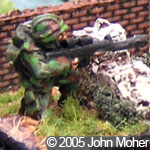
The Modern period traditionally covers everything from the Korean War in 1950 through to the present day. The sheer number of conflicts is actually pretty staggering and as someone once said there is a war in progress somewhere round the globe every single day (a pretty sad fact really). In the past I have mainly been interested in the Arab-Israeli conflicts and the potential European confrontations generated by the Cold War – these interested resulted in my being a co-author of the Modern Spearhead (© 2000) rule set for modern Brigade to Corps level battles with micro-armour. However in recent years as I have moved away from gaming in smaller scales such as 1/285th micro-armour, and to some extent that Grand-Tactical type of game, I have revisited my interest in other modern conflicts. As a result I’m now slowly starting to game these at the Company & Battalion level in 1/76th (20mm) using Crossfire.
